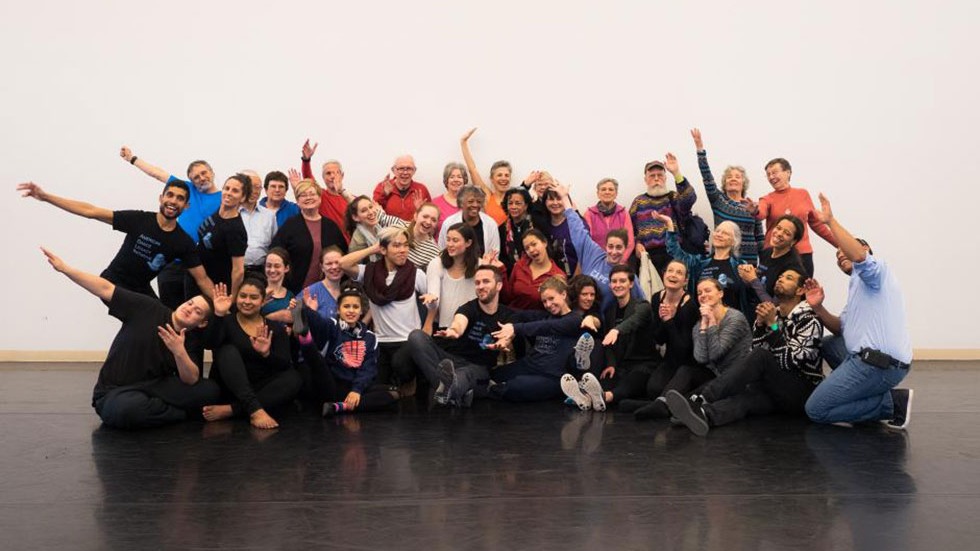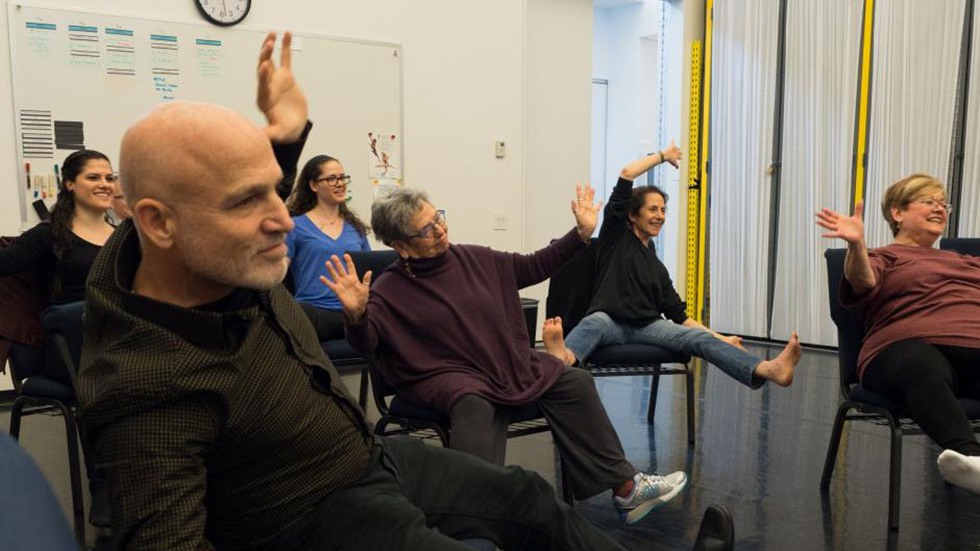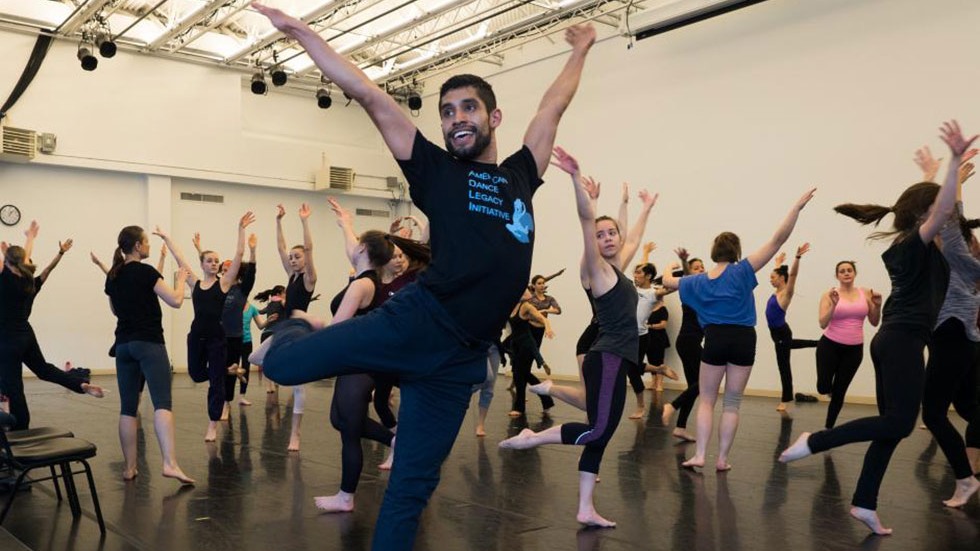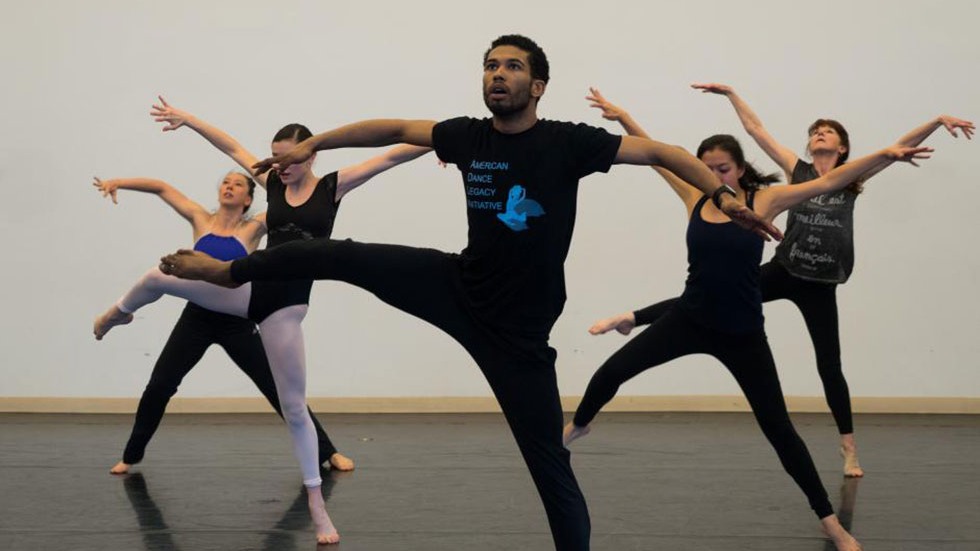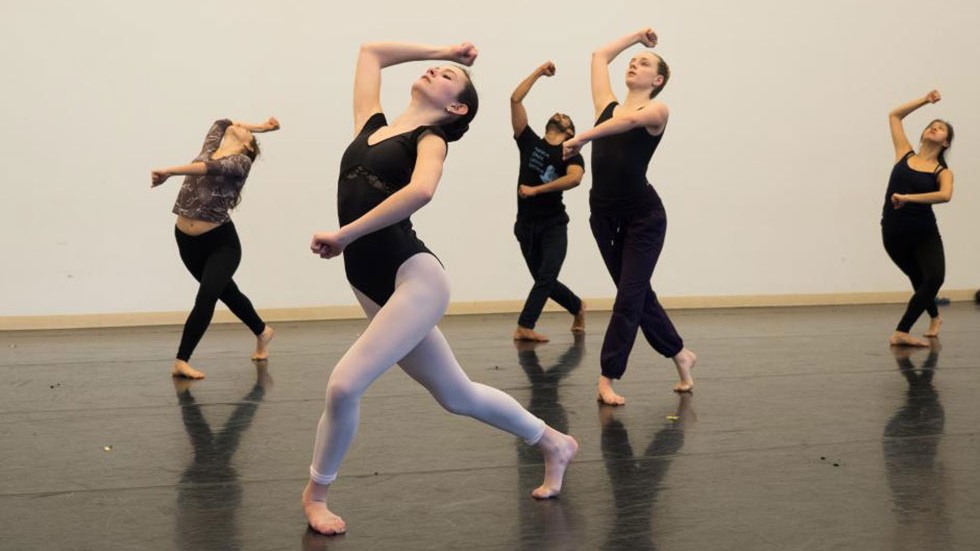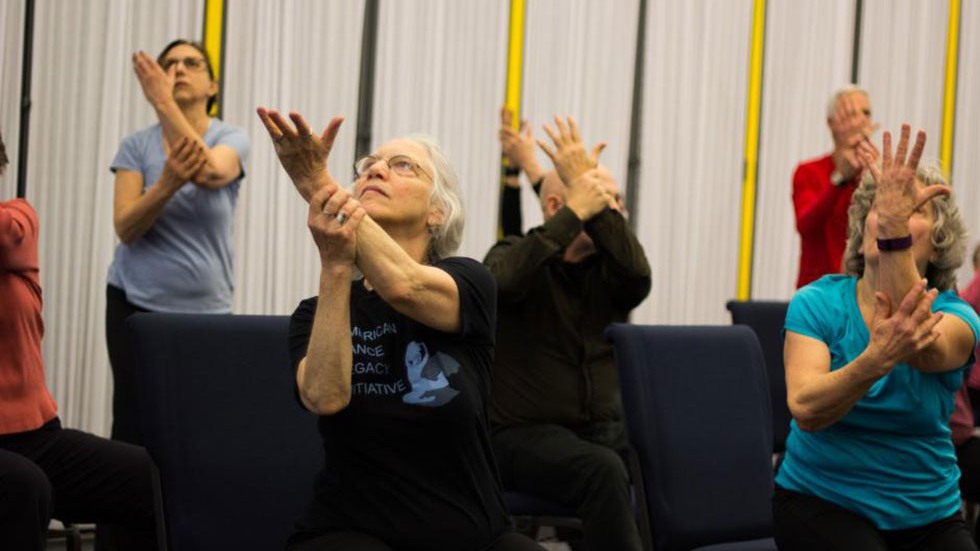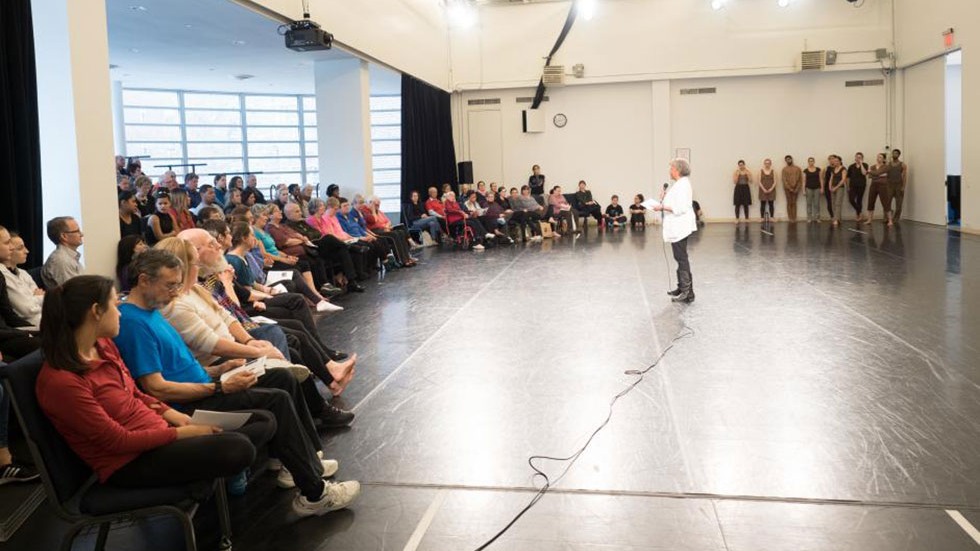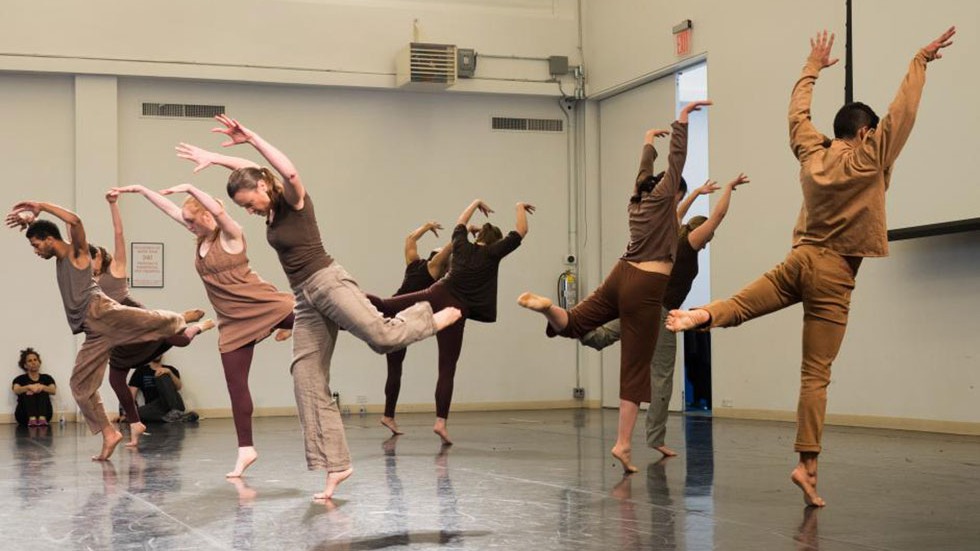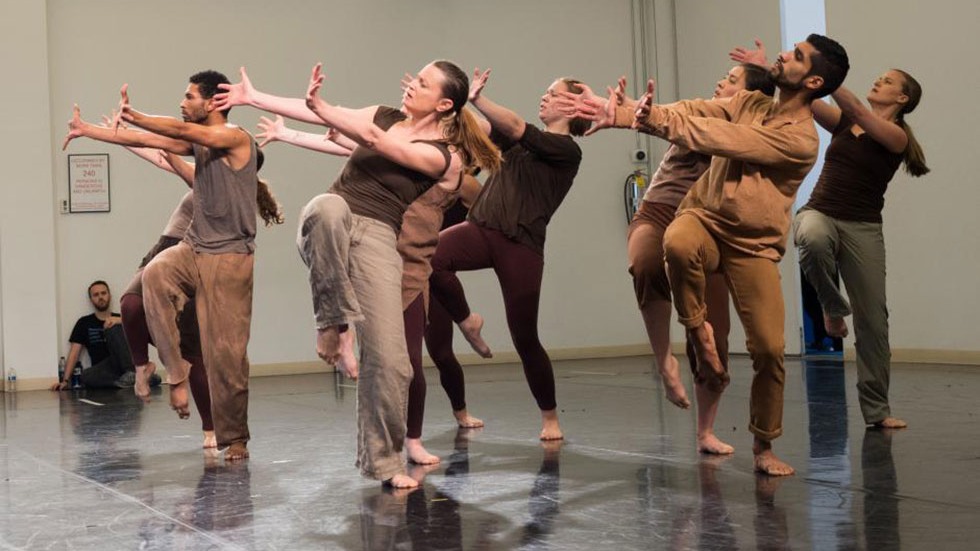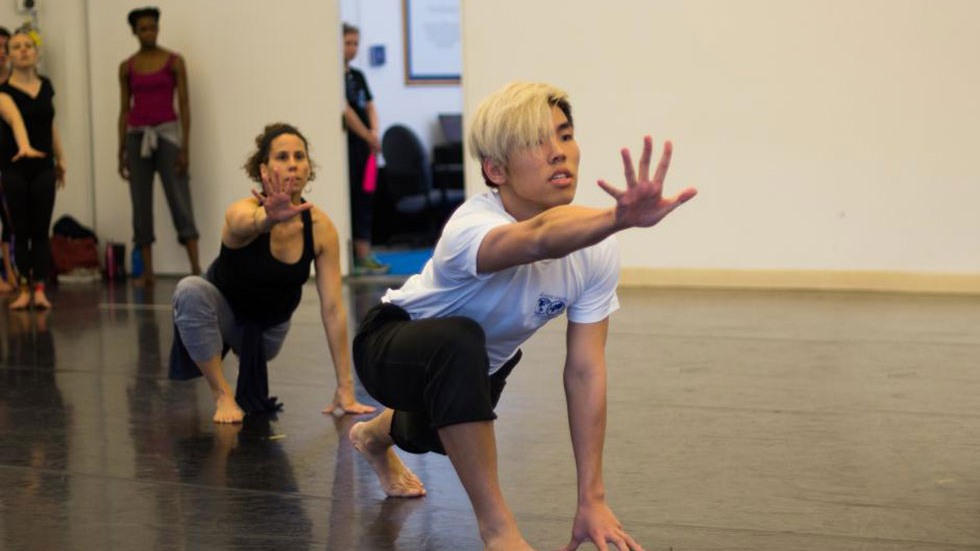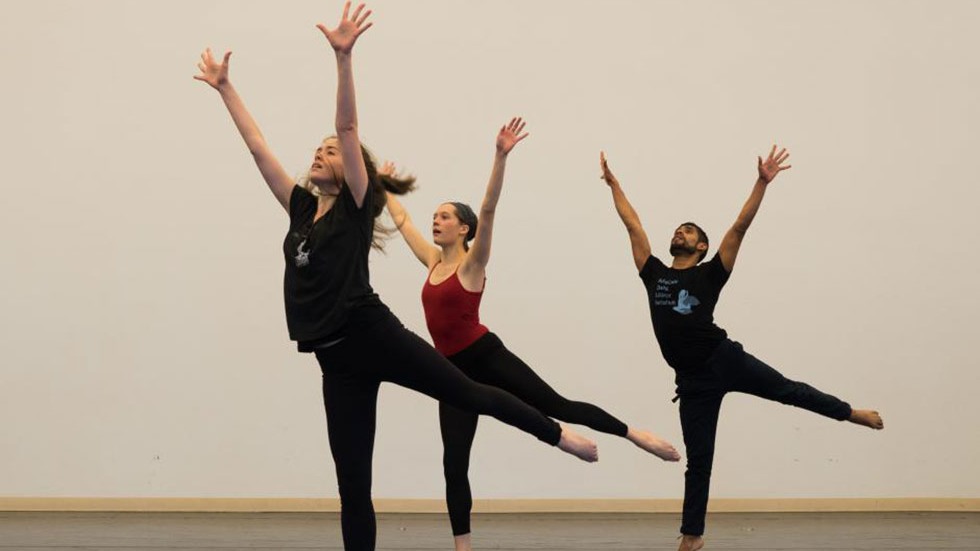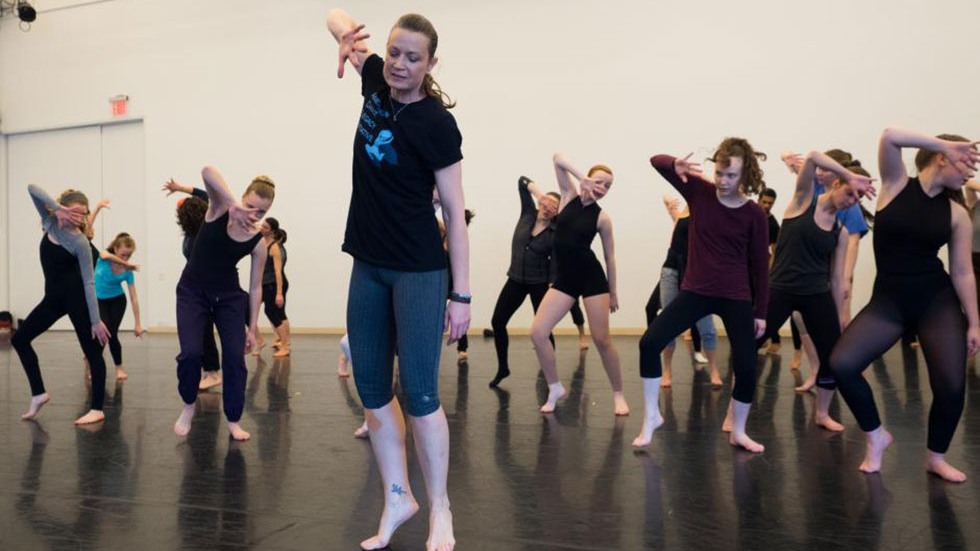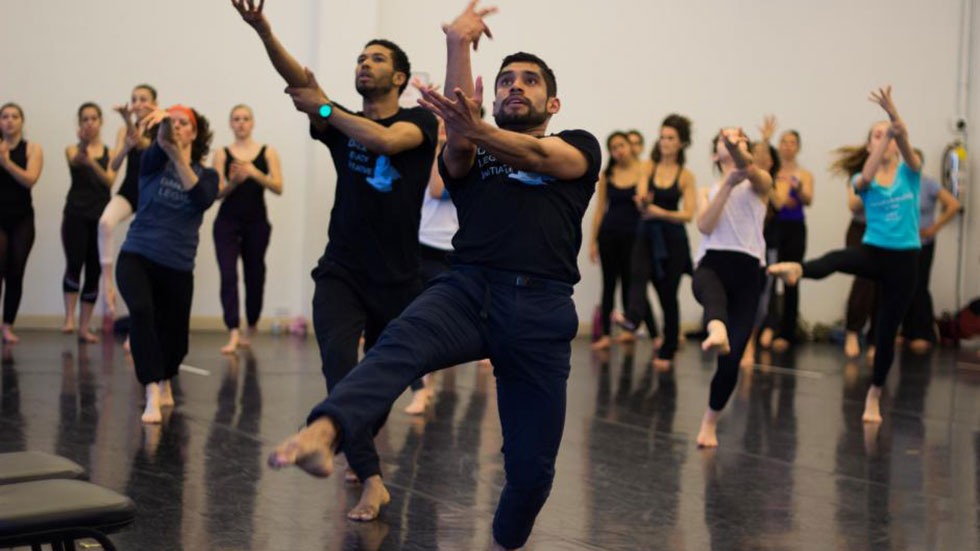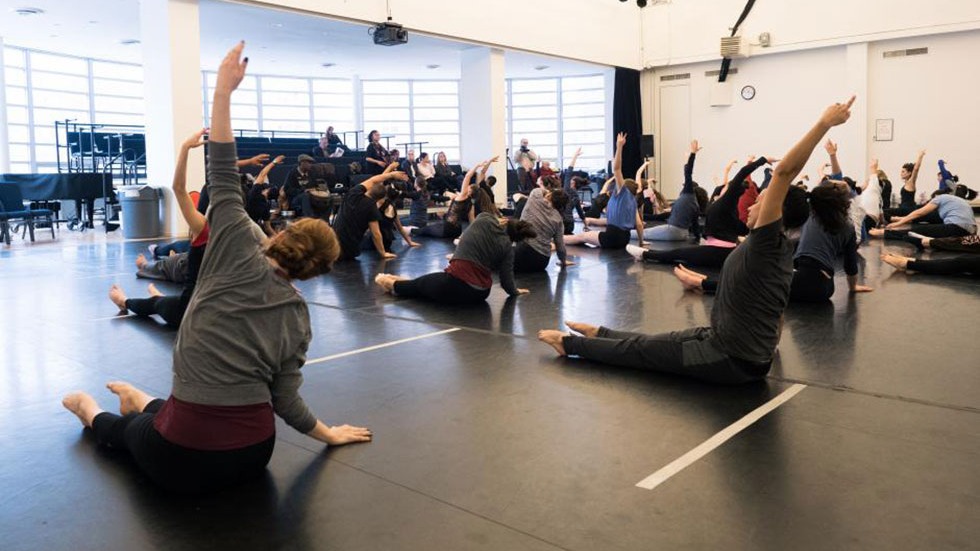PROVIDENCE, R.I. [Brown University] — How do you prepare an audience to fully engage with the re-staging of a dance that premiered almost 60 years ago? How do you help dancers and viewers to understand the emotional significance of the gestures and movements in a dance they have not studied? Or build an interpretive infrastructure for an art form that is lightly documented and, for most people, consumed during the ephemeral experience of a performance?
These are the kinds of questions that Julie Adams Strandberg, co-founder of the American Dance Legacy Initiative (ADLI) and a senior lecturer in theatre arts and performance studies at Brown, has long sought to address. She considers dance to be the least known and understood of the arts, and has worked with her sister, dancer and ADLI co-founder Carolyn Adams, to create participatory experiences and build a body of scholarly resources that deepen dance scholarship, create a more dance-literate public, and preserve great American dances. ADLI maintains a growing archive of materials at Brown’s John Nicholas Brown Center for Public Humanities and Cultural Heritage, and, with the aid of an array of partners, co-hosts workshops and events that help pass on direct knowledge of the works of seminal American dance-makers.
In mid-March, ADLI traveled to New York City to co-host the “Rainbow Etude Workshop,” based on seminal American choreographer Donald McKayle’s dance masterwork “Rainbow ‘Round My Shoulder.” The workshop was held at the Lower East Side studios of Paul Taylor’s American Modern Dance, and its purpose was to engage a diverse group of dancers, educators and audience members in a deeper understanding of this piece of American dance history.
Strandberg led the trip, taking with her Brown student dancers, ADLI’s performing and teaching ensemble Dancing Legacy, students from nearby Central Falls High School who work regularly with Dancing Legacy, and a group of Rhode Island dancers with Parkinson’s disease from the program Dance for our Aging Population.
The day included dance classes, performances and a lecture demonstration based on “Rainbow ‘Round My Shoulder,” which premiered in 1959 and centers on a Southern chain gang, the freedoms the prisoners forced to work on it have lost, and their memories and aspirations. Considered a classic of modern American dance, it exemplifies McKayle’s interest in socially conscious dance, emotional movement and dramatic characterization. The Rainbow Etude Workshop was designed to familiarize dancers and others with the influential work in advance of its full performance by Paul Taylor’s American Modern Dance and the Dayton Contemporary Dance Company in late March at New York’s Lincoln Center.
Workshops like this – which feature “Repertory Etudes,” shorter versions of signature dances – help audiences build intimacy with the work they are about to see and give dancers sufficient information to learn a piece, Strandberg said. They are part of ADLI’s overall mission to make dances accessible and culturally relevant. She said it was her dream that “a person going to see a dance piece would learn about it first – have a kinesthetic experience of it.” While opera buffs and theatergoers have access to the librettos or texts of works, Strandberg explained, dance audiences often lack that kind of prior knowledge and must “go in cold.” McKayle was the first choreographer to create a Repertory Etude for ADLI in the 1990’s, and that distillation of the larger work was the basis for the workshop in New York.
Preserving Signature Dances
Part of the difficulty of dance preservation resides in how choreography and dances are documented and who is allowed to perform them, Strandberg said. Dances are often owned by a dance company. If the company chooses not to perform a dance, audiences have no opportunity to see it; if a company dissolves, dances could be lost. Dances may be licensed for performance, but sometimes a desire to retain strict control of a dance’s presentation makes the owners of the intellectual property reluctant to license them.
Strandberg and Adams were moved to address these issues in the 1990s, which Strandberg identifies as a time of crisis in the dance field. The first generation of major American choreographers, including Alvin Ailey, José Limón, George Balanchine and Martha Graham, had died between 1972 and 1991; creative control of their works was limiting audience access, and the AIDS epidemic was adding to the loss of life and liveliness in the discipline, she said.
Despite resistance to the idea of loss of creative control, and choreographers’ concerns that dances, made more readily available, might be performed poorly, ADLI began collaborating with choreographers to create the Repertory Etudes. Through Dancing Legacy, which is directed by Strandberg’s daughter – 1992 Brown alumna Laura Bennett – ADLI is able to teach commissioned Repertory Etudes by esteemed chorographers like Robert Battle, Danny Buraczeski, Danny Grossman and others.
ADLI also makes documentaries and shares its collection of publications, teaching resources, assessment tools and other items in the John Nicholas Brown Center’s archives. Participants in the Rainbow Etude Workshop were able to use one of those resources by watching footage of the original cast performing “Rainbow ’Round My Shoulder” live on CBS in 1959 via the documentary Images and Reflections: Celebration of a Masterpiece.
Modes of Access
During the Rainbow Etude Workshop, while members of Dancing Legacy taught McKayle’s Repertory Etude to a class of advanced dancers, Rachel Balaban, a Brown alumna who leads program Dance for our Aging Population courses and is the Rhode Island Regional Coordinator for Dance for PD (Parkinson’s Disease), led a class on the etude for persons with Parkinson’s. Strandberg has explored adapting dances for individuals with Parkinson’s disease and autism for several years with Balaban in her interdisciplinary Artists and Scientists as Partners courses at Brown, and considers the adapted dances for different dancers part of the overall drive for accessibility.
In a field where someone as young as six can be discouraged from continuing in ballet for being the “wrong” shape, size or color, Strandberg stresses the importance of “providing everybody with access to the actual dance works and to the range of emotions and gestures” in a rigorous way. “It’s very demanding and very specific. It’s challenging and it really makes you have a sense of accomplishment.” To approach a dance with rigor, Strandberg says, is to come at it with an in-depth understanding of the work, something that ADLI’s multifaceted approach helps create. “In dancing, you don’t think about what’s wrong with you. You think about what you can do,” she says. “These dancers are making art.” That art was on display in the lecture demonstration, which featured performances of the etude by dancers with Parkinson’s disease, students from Brown and Central Falls High School, and members of Dancing Legacy.
The students from Central Falls, a small city about five miles north of Providence that has contended with significant financial challenges in recent years, have worked with ADLI and Brown through Bennett. For over a decade, Bennett created what Strandberg describes as a “deep partnership” with Central Falls High School. Classes are held during the school day as part of the curriculum, and students perform research on choreographers and their works in addition to learning movement. Several years ago, one group researched chain gangs as they learned “Rainbow ‘Round My Shoulder” and created an exhibition on the subject that was hosted by Brown’s Center for the Study of Slavery and Justice.
At the Rainbow Etude Workshop, the teenage students from Central Falls were joined by dancers in their 80s, Brown dance students, Brown alumni who first learned the Rainbow Etude decades ago, and professional dancers. Strandberg said it was striking to witness how people were able to re-encounter the dance, and that the multigenerational workshop surpassed everyone’s expectations.
“You look at these people that are sharing an embodied experience with each other. It was like the audience wasn’t separate,” Strandberg said. “People were connected by their common knowledge and their memories. Some were revisiting the dance and it came right back to them. That’s a part of these particular demonstrations that’s really powerful.”
